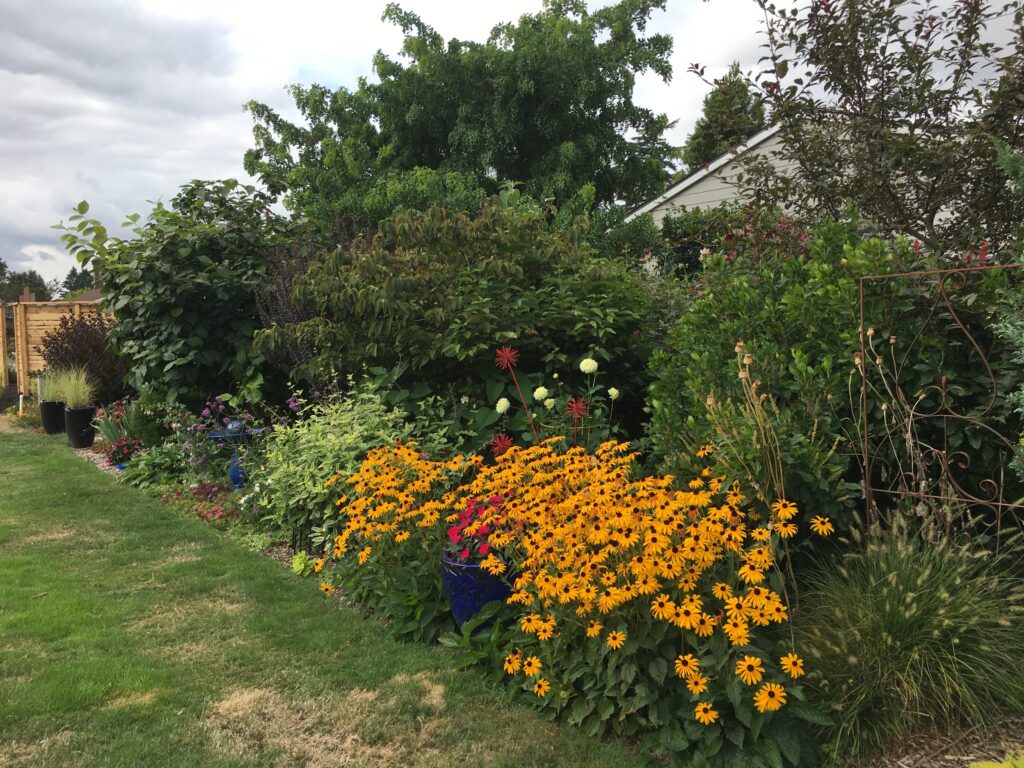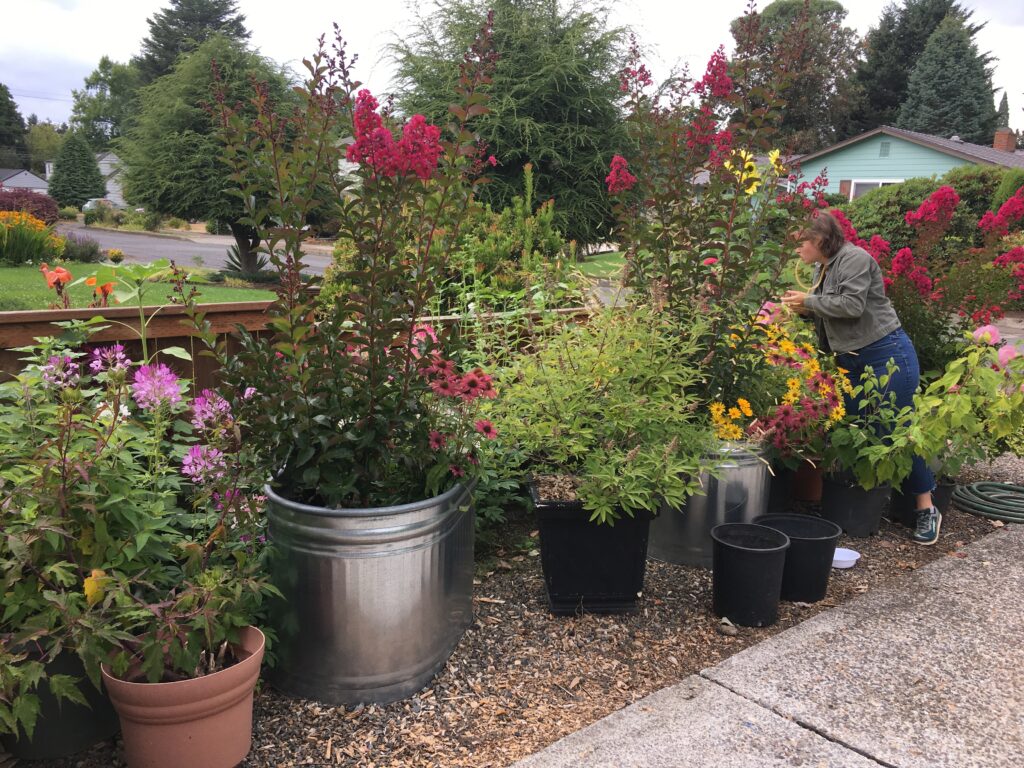This article was originally written by Gail Langellotto for publication in the Hardy Plant Society of Oregon Quarterly Magazine, available to HPSO members.
You are what you eat. This phrase can be traced back to an 1826 essay by Anthelme Brillat-Savarin, who wrote ‘Tell me what you eat and I will tell you what you are.’ Diet and health are inextricably linked for almost all animals, including bees.
Bees foraging from flowering plants obtain carbohydrates from nectar. Pollen provides protein, fats, and vitamins. While the quantity of food is provided by the abundance of floral plantings, the quality of food is determined by the diversity of floral plantings. This is because different flowering plants offer different nutrients to bees’ diets. And, different bees have different nutritional requirements that vary among species, or that vary across life stages of a single species. For example, mason bee larvae (Osmia bicornis) larvae performed best on carbohydrate rich diets. Fluctuations in protein made little different to bee health, but carbohydrate deficiencies slowed mason bee larval growth and reduced survival[i]. Bumblebees (Bombus terrestris) foragers select foods that provide a target mix of 71% proteins, 6% carbohydrates, and 23% lipids[ii].

Diverse floral plantings also help to reduce bee disease. Flowers have been shown to be hotspots for bee disease transmission. If you think of a flower as an elementary school drinking fountain, it makes sense that a sequence of bees could be exposed to disease carried by previous floral visitors. Following a visit by parasite-infected bumblebees, some flowering plants (such as milkweed or bee balm) harbored more bee pathogens than others (e.g. thyme or snapdragons) [iii]. And here’s a fun fact you have likely never come across before: bees preferentially poop on seaside daisy compared to a variety of other flowering plants in the Malvaceae, Verbenaceae, or composites with less floral area in disk flowers[iv]. Planting diverse flower types diffuses interactions between healthy and diseased bees. Not all floral morphologies effectively hold and transfer disease. And, planting diverse plant types provides more foraging options for bees, which can limit opportunities for healthy and diseased bees to come into contact.
While some flowers may be hotspots for bee disease transmission, others provide anti-microbial compounds that help some bee to naturally fight disease. The common eastern bumblebee (Bombus impatiens), but not the brown-belted bumblebee (Bombus griseocollis) was able to fend off parasite infection after consuming sunflower (Helianthus annuus) pollen[v].
Research on the nutritional ecology of wild bees is relatively young. And, from what we’ve learned thus far, different bee species have different nutirtional needs. It’s thus impossible to provide a specific garden plant recipe that can promote optimal bee health. Nonetheless, a few key points are clear. Monocultural cropping systems are harmful to bee nutrition. Just as you or I could not achieve optimal health by limiting our diet to one food item, neither can bees. And, this nutritional harm that monocultural cropping systems presents to bees doesn’t even consider the increased pesticide applications that single-cropped systems generally require. Gardens, on the other hand, are better poised to meet the nutritional requirements of bees, by virtue of the diverse flowering plant community that is typical of most gardens.
Thus, in case you need a reason to go out and discover new flowering plants for bees and other beneficial insects in your garden, bee nutrition is yet one more reason to build biodiverse plantings into your garden design.


[i] Austin and Gilbert. 2021. Solitary bee larvae prioritize carbohydrate over protein in parentally provided pollen. Functional Ecology 35: 1069-1080. https://doi.org/10.1111/1365-2435.13746
[ii] Kraus et al. 2019. Bumblebees adjust protein and lipid collection rules to the presence of brood Current Zoology 65: 437-446. https://doi.org/10.1093/cz/zoz026
[iii] Adler et al. 2018. Disease where you dine: plant species and floral traits associated with pathogen transmission in bumble bees. Ecology 99: 2535-2545. https://doi.org/10.1002/ecy.2503
[iv] Bodden et al. 2019. Floral traits predict frequency of defecation on flowers by foraging bumble bees. Journal of Insect Science 19: 1-3. https://doi.org/10.1093/jisesa/iez091
[v] Malfi et al. 2023. Sunflower plantings reduce a common gut pathogen and increase queen production in common eastern bumblebee colonies. Proceedings of the Royal Society B 290: 20230055. https://doi.org/10.1098/rspb.2023.0055
